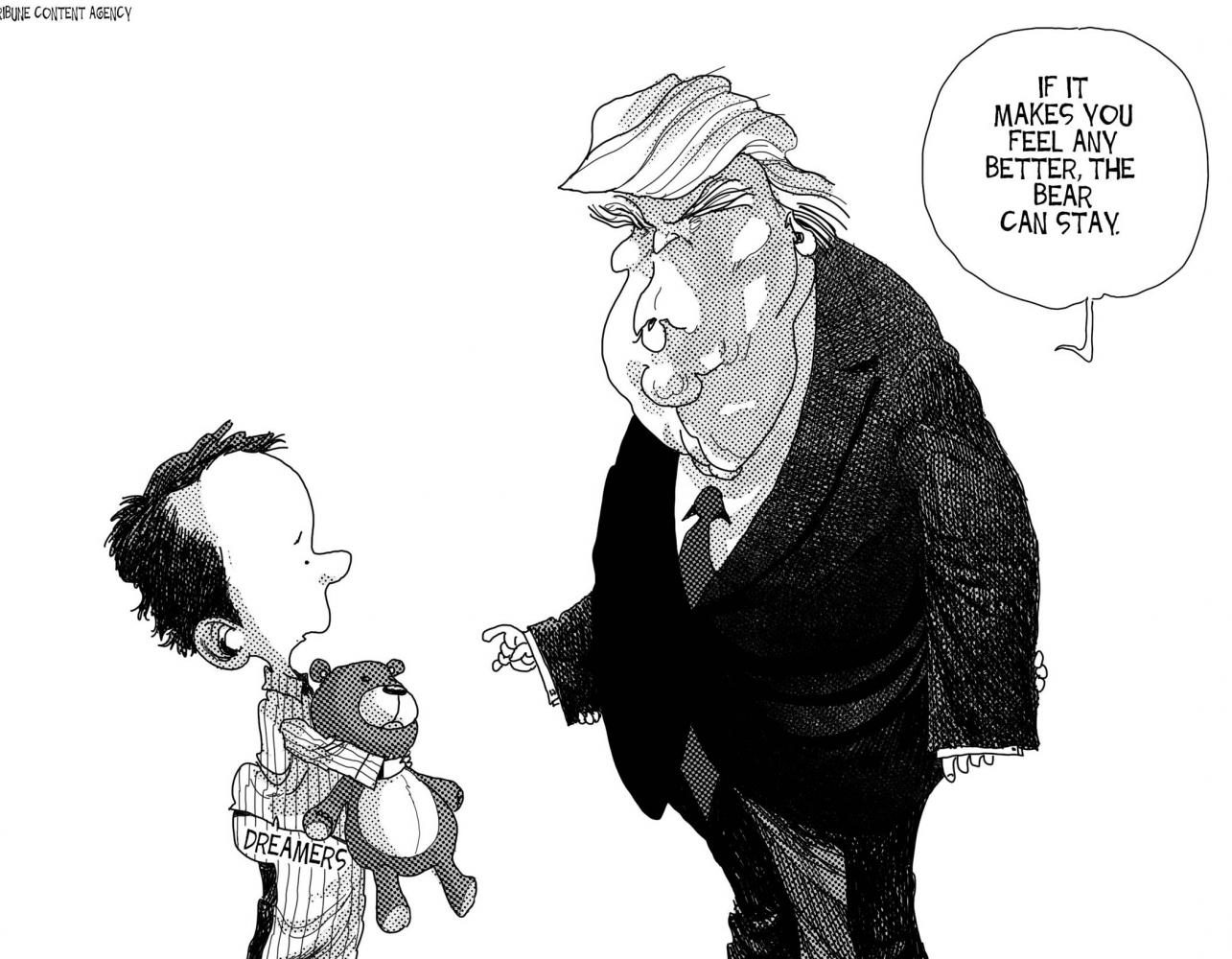DACA: failure from the start
After the Trump administration announced the ending of DACA last week, campus life editor Leziga Barikor calls for strict and clear immigration policies that may require case-by-case deportations.
Sep 14, 2017
After much internal deliberation, I’ve decided to write this column with hopes of giving people a fresh perspective on the controversy surrounding the Deferred Action for Childhood Arrivals (DACA) program.
President Donald Trump made the move Tuesday, Sept. 5, to end DACA, making the announcement with Attorney General Jeff Sessions. This move, I think, was an error because it put more ownership on the shoulders of the Trump administration.
DACA was introduced in June 2012 via an executive order from former President Obama. It is an important distinction to make — this was Obama’s doing, not simply his “administration.” This distinction is essential in understanding why it was held up in the courts.
The executive order was an overreach of power that belongs to Congress. Winning the presidency, but losing the Congress, meant Obama couldn’t get away with later convincing Congress to enshrine DACA into legislation. Essentially, Obama made a promise to the unauthorized migrant population that he had no way of keeping.
As a side note to clarify my terms, I will be referring to “illegal immigrants” as unauthorized migrants or unauthorized immigrants. The inaccurate term “undocumented immigrant” implies a clerical error on the part of the government and doesn’t address the legal situation accurately.
Further, the IRS officially refers to such individuals who are not US citizens or who are US nationals as “aliens.” In addition, the IRS refers to aliens who either enter illegally or enter legally but overstay their legal status as “illegal aliens” or “undocumented aliens.” They don’t fall under the legal definition of “immigrant” nor “nonimmigrant,” which would be the status of UNI foreign exchange students.
Now back to the issues with DACA.
Not only was the use of an executive order an overstep, but it also caused backlash from members of the Immigration and Customs Enforcement (ICE) agents at the time. They claimed Obama “violated his congressional mandate to carry out immigration enforcement laws,” according to a 2014 USA Today article.
One of the ideas that Trump supporters pushed was that a Trump presidency would be a return to the rule of law. Supporters like Ann Coulter have criticized the president for not being tougher on immigration or ending DACA as soon as he took office. Like it or hate it, it is an issue within the executive purview.
But when it came to DACA, Trump could’ve done nothing, and still we would be where we are now with the program because the courts were striking it down.
The Supreme Court split 4-4 on June 23, 2016 regarding whether the Deferred Action for Parents of Americans (DAPA) and Lawful Permanent Residents programs were an executive overreach by Obama. This left the injunction against the programs from the Texas lower court’s decision in place.
Trump’s appointment to the Supreme Court, Judge Neil Gorsuch, all but assured that the DAPA and DACA programs would come to an end. More suits from conservative states were coming, and that is what inspired Trump to make a decision, according to the Sept. 5 issue of The New York Times.
Regardless of what programs were still in place, there is still a major issue that I must highlight. These unauthorized immigrants had no path towards citizenship through the DACA and DAPA programs.
They trusted the Obama-era programs with their identities, and I think they deserve justice for that. But illegal immigration is not the victimless crime activists claim it to be. If your parents make millions through bank embezzlement and then get caught, your sudden change in economic status, although not your fault, is still a consequence you must face.
Protests have mentioned the loss of these unauthorized migrants from the workforce as a reason to not pull the plug on the program, but I say that’s exactly the problem — the workforce is the victim. Before these programs legalized unauthorized migrants to work, they were still participating in society and that required more illegal acts.
Before I could even fully accept my admittance to UNI, I had to bring at least three different types of identification into the Registrar. To my surprise, I had to apply for a new social security card that reflected my new citizen status.
All those documents you might forget about as part of school and work application processes need to be legitimately or illegitimately produced at some point. Our justice system sends business professionals to jail for working without the proper licensing — how much more for not being a lawful resident of the nation in which you work?
But I’m not without empathy for people faced with that choice, and neither is the government. As protests continue, Trump, who has no legal standing to keep these programs alive, is asking Congress to put DACA-like legislation in place.
Republicans and Democrats want to find a fair solution and pathway for unauthorized immigrants to get in line for US citizenship.
The issue of unauthorized immigration needs to be handled seriously and strictly, especially when viewed through the lens of human trafficking. One tragedy the DACA program created was the massive surge of Central American children to the US.
These children hoped to be reunited legitimately with their families, but being young and traveling alone made them perfect targets for human trafficking during Obama’s second term, according to a PBS article from March 7, 2016.
We need to demand Congress to be strict and clear on immigration — no more promises that can’t be kept and no more policies that put people in danger. We need a just system that works and makes sense. That may not look like mass deportation, but it might look like case-by-case deportations.
If there’s going to be a path to citizenship, it needs to run uniquely from the normal channels. And if Trump really wants to make unauthorized migrants legit, he needs to research more and tweet less.









